Zero calories / zero glycemic index
safe for diabetics, keto, weight-loss seekers.
A synthetic junk sweetener?
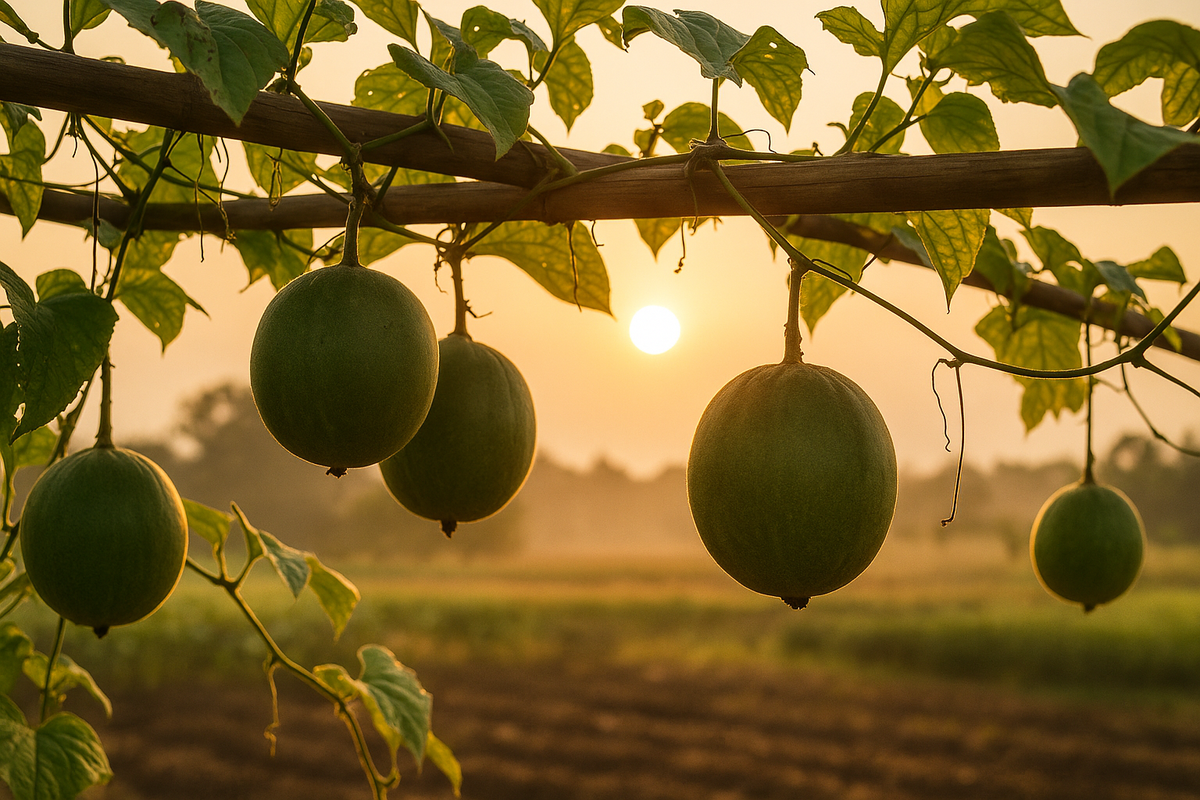
Aspartame is a synthetic, low-calorie sweetener:
From a regulatory perspective:
Most people, even high diet-soda consumers, sit below those ADIs on paper.
After ingestion, aspartame is fully broken down in the gut and intestinal cells into:
Those metabolites then enter normal metabolic pools:
Two important nuances:
The functional-nutrition question is less “does it kill cells in a petri dish at insane doses?” and more “what does chronic, real-world intake do to cardiometabolic risk, brain health, and overall dietary patterns—especially when better options exist?”
In 2023, two big bodies looked at the same dataset and came to different types of conclusions:
EFSA’s comprehensive 2013 review similarly concluded no carcinogenic concern at current exposures or at the ADI.
The American Cancer Society’s summary captures the nuance:
So from a strict regulatory perspective, aspartame is still allowed, with ADIs unchanged. From a cautious, systems-thinking perspective, a Group 2B classification plus non-essentiality is enough to ask: why keep this in the rotation if you have non-controversial alternatives?
Recent large cohort work doesn’t let artificial sweeteners off the hook, even if aspartame isn’t singled out every time.
These are observational:
But again, this is about systems design. When observational data keeps flagging a pattern (artificial sweeteners + ultra-processed diets + higher CVD risk), and aspartame is one of the main workhorses in that category, a cautious practitioner doesn’t ignore that just because Adverse Event #1 hasn’t met toxicology’s gold standard of proof.
Mechanistic and clinical data here are noisy but worth acknowledging:
No one can honestly say “aspartame has been definitively proven to cause cognitive decline.” But it is also not honest, at this point, to say “there’s clearly no downside” to high artificial sweetener intake over decades.
From a high-standards perspective, if you can get sweetness from non-controversial, zero-calorie natural sources (monk fruit, stevia) instead of betting on the long-term safety of synthetic sweeteners in an ultra-processed matrix, the risk/reward profile is obvious.
Aspartame rarely travels alone; it tends to show up in additive clusters: dyes, emulsifiers, other sweeteners, stabilizers.
A large French cohort (~100k participants) recently showed that combinations of additives (including sweeteners) were associated with higher risk of type 2 diabetes than single additives examined in isolation, suggesting real-world synergy matters.
Regulatory toxicology is mostly single-compound-centric:
Aspartame itself might pass the single-compound test within ADI; the food environments it lives in often do not.
Now the contrast that matters for the strategy you’re building.
Aspartame
MonkVee Monk Fruit
MonkVee’s implementation:
MonkVee Stevia (Reb A)
Crucially for your brand positioning:
If the question is:
“Is aspartame legal and broadly considered safe at current intake levels by major regulators?”
→ Yes. EFSA, JECFA, FDA all maintain that stance, even post-IARC.
If the question is:
“Is aspartame the smartest long-term sweetener to build a metabolic-repair or prevention strategy around, given everything we know in 2023–2025?”
From a high-standards viewpoint, the answer is no:
Given that:
…it’s very hard to defend routine, high-frequency aspartame use as “best practice.”
A reasonable, nuanced stance:
For an evidence-driven, holistic approach, the hierarchy is:
That gives you metabolic upside, regulatory comfort, and a clean narrative: you’re not trading sucrose for something equally controversial—you’re stepping off that axis entirely.
| Sweetener | Sweetness Level vs Sugar | Calories per Teaspoon | Glycemic Index | Aftertaste / Fillers | Verdict |
|---|---|---|---|---|---|
| Table Sugar | 1x | 16 | 65 | No fillers, but addictive | Tastes good, but fuels cravings & crashes |
| Pure Monk Fruit (MonkVee) | ~150x sweeter | 0 | 0 | No fillers, clean taste | Best sugar alternative – clean, natural, zero glycemic impact |
| Stevia | ~300x sweeter | 0 | 0 | No fillers, MonkVee has no aftertaste | Pure Stevia is a great option like Pure Monk Fruit |
| Coconut Sugar | 1x | 15 | 54 | No fillers, but still sugar | Marketed as “healthy,” but still raises blood sugar |
| Agave | 1.5x | 15 | 10–20 | No fillers, but high fructose | Lower GI, but high fructose load |
| Maple Syrup | 1x | 15 | 54 | Natural, but still sugar | Delicious, but not a real sugar-free alternative |
Millions of Americans are waking up to the processed sugar epidemic. Don’t be the last one stuck with the crash, bloat, and regrets — when MonkVee makes the swap easy.
Monk fruit, also known as Luo Han Guo, is a small melon native to southern China. For centuries, Buddhist monks used it as a medicinal tea for longevity and wellness. Its sweetness comes from mogrosides — unique antioxidant compounds up to 150–300× sweeter than sugar, but with zero calories and no glycemic impact.
At MonkVee, we deliver both pure monk fruit extract and pure stevia leaf extract — no erythritol, maltodextrin, or fillers. For those who enjoy blends, we also craft monk fruit + erythritol sweeteners that bake, brown, and caramelize just like sugar.
| Sweetener | Calories (per tsp) | Other Nutrition Claims | Reality Check |
|---|---|---|---|
| Table Sugar (cane) | ~16 | “Energy source” | Empty calories, high glycemic load |
| Coconut Sugar | ~16 | Lower GI, contains minerals | Still mostly sucrose |
| Date Sugar | ~15 | Made from dried dates | Still sugar, high calorie |
| Agave Nectar | ~20–21 | Low GI | High fructose load |
| Maple Syrup | ~19 | Minerals & antioxidants | Still sugar-heavy |
| Honey | ~16–20 | Natural, antibacterial | High sugar load |
| Jaggery | ~15–16 | “Unrefined sugar” | Same impact as cane sugar |
| Molasses | ~15 | Iron & minerals | Still concentrated sugar |
| Brand | Problematic Ingredients | Why It Matters |
|---|---|---|
| Monk Fruit in the Raw | Dextrose | Cheap filler; spikes blood sugar |
| Splenda Monk Fruit | Dextrose, Maltodextrin | Additives reduce purity |
| Whole Earth Monk Fruit Blend | Erythritol, Natural Flavors, Sugar | Contains sugar + vague flavors |
| Sugar in the Raw “Monk Fruit” | Cane Sugar | Not sugar-free; misleading |
| Sweet’N Low “Monk Fruit” | Saccharin, Dextrose | Artificial additive with history |
| Category | Best Fit For | Key Benefits | Caveats |
|---|---|---|---|
| Pure Monk Fruit Extract | Zero-calorie drinks & baking | Natural, antioxidant-rich | Very sweet; use sparingly |
| Monk Fruit 1:1 Blends | Daily sugar replacement | Easy swap; sugar-like texture | Higher price than sugar |
| Pure Stevia Extract | Teas, smoothies, keto | No calories, no aftertaste (MonkVee) | Other brands may taste bitter |
| “Natural” Sugars | Traditional recipes | Trace minerals | Same calorie & glycemic impact |
| Syrups | Flavor depth | Antioxidants, unique taste | High calorie, sugar-heavy |
| Product | Sweetness vs Sugar | Daily Use Example | Average Duration |
|---|---|---|---|
| MonkVee Pure Monk Fruit Extract | 150× sweeter | 1 coffee/tea daily | ~6 months |
| MonkVee Pure Stevia Extract | 300× sweeter | Smoothie or tea daily | ~9–10 months |
| Brand | Strengths | Weaknesses |
|---|---|---|
| MonkVee | Pure extracts, premium taste, bulk sizes | Higher cost vs sugar |
| Monk Fruit in the Raw | Easy to find | Contains dextrose filler |
| Sweet’N Low “Monk Fruit” | Cheap | Contains saccharin & dextrose |
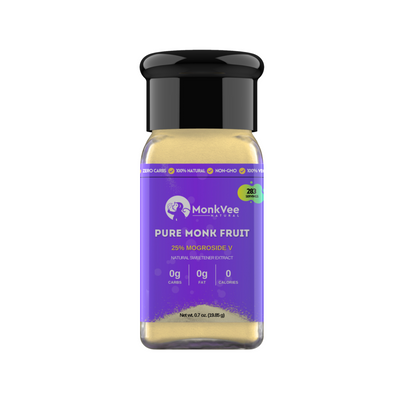
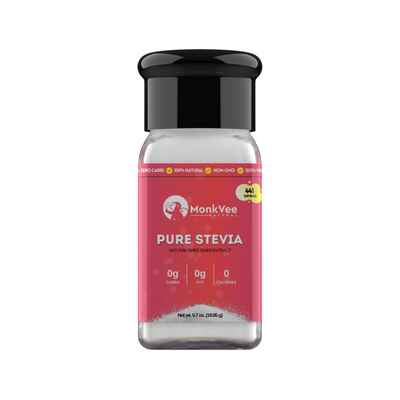
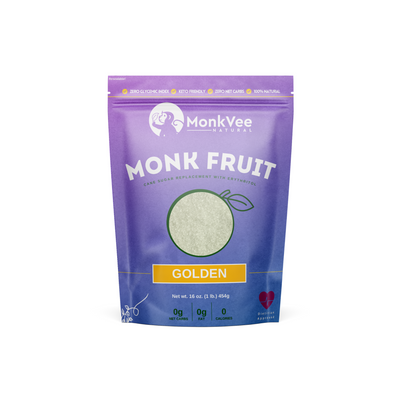
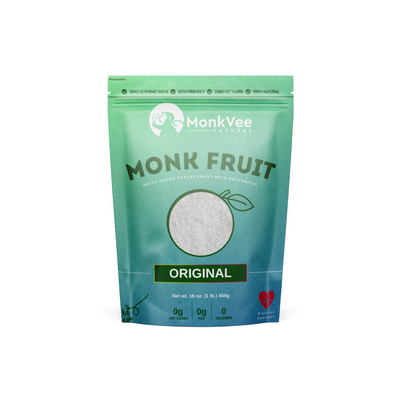
safe for diabetics, keto, weight-loss seekers.
Say goodbye to added sugar and lab-made artificial sweeteners.
No bitter aftertaste
Our products are high quality and 100% natural with no sneaky fillers or preservatives.
Our customers keep coming back for more. Why count calories when you can just ditch them!
MonkVee is founded by a type 1 diabetic and registered dietitian.
MonkVee sweeteners can be used in anything! See our recipe library for inspiration.
100% satisfaction guarantee or your money back, no questions asked

Ditching the sugar was never THIS easy!
Learn why millions of smart humans are ditching added sugar now
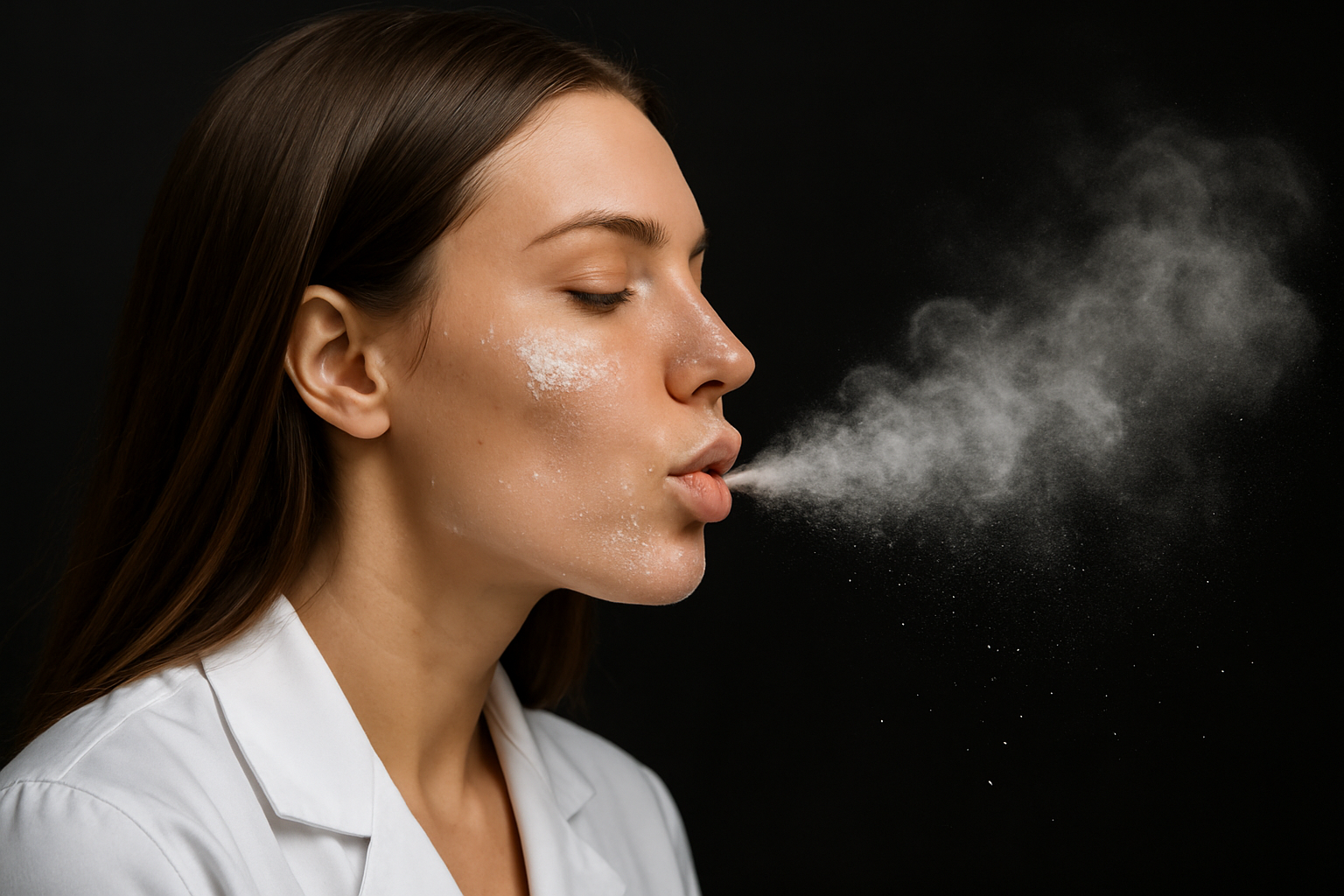

Cuts empty calories without losing satiety. Linked to reduced visceral fat (Harvard study). Prevents sugar spikes & crashes that fuel hunger
Prevents insulin spikes & crashes. Improves insulin sensitivity. Lowers Type 2 diabetes risk.
High sugar doubles risk of heart mortality. Improves cholesterol & lipid profiles. Reduces fatty liver risk.
Eliminates sugar highs and crashes. Reduces brain fog. Linked to lower rates of mood disorders
Reduces stress hormone imbalance. Improves hunger/satiety regulation. Supports women with PCOS (insulin-driven).
Lowers acne-causing inflammation. Prevents glycation (wrinkles, collagen damage). Reduces water retention & bloating. Sugar feeds cavity-causing bacteria. Cutting sugar reduces decay & gum disease.
Sugar weakens immune response. Cutting sugar reduces harmful bacteria & candida. Lowers risk of major chronic diseases. Linked to greater life expectancy.
High sugar impairs memory & focus. Alzheimer’s risk tied to “Type 3 diabetes” effect. Improves overall vitality & daily health. Lower risk of cognitive decline with reduced sugar intake
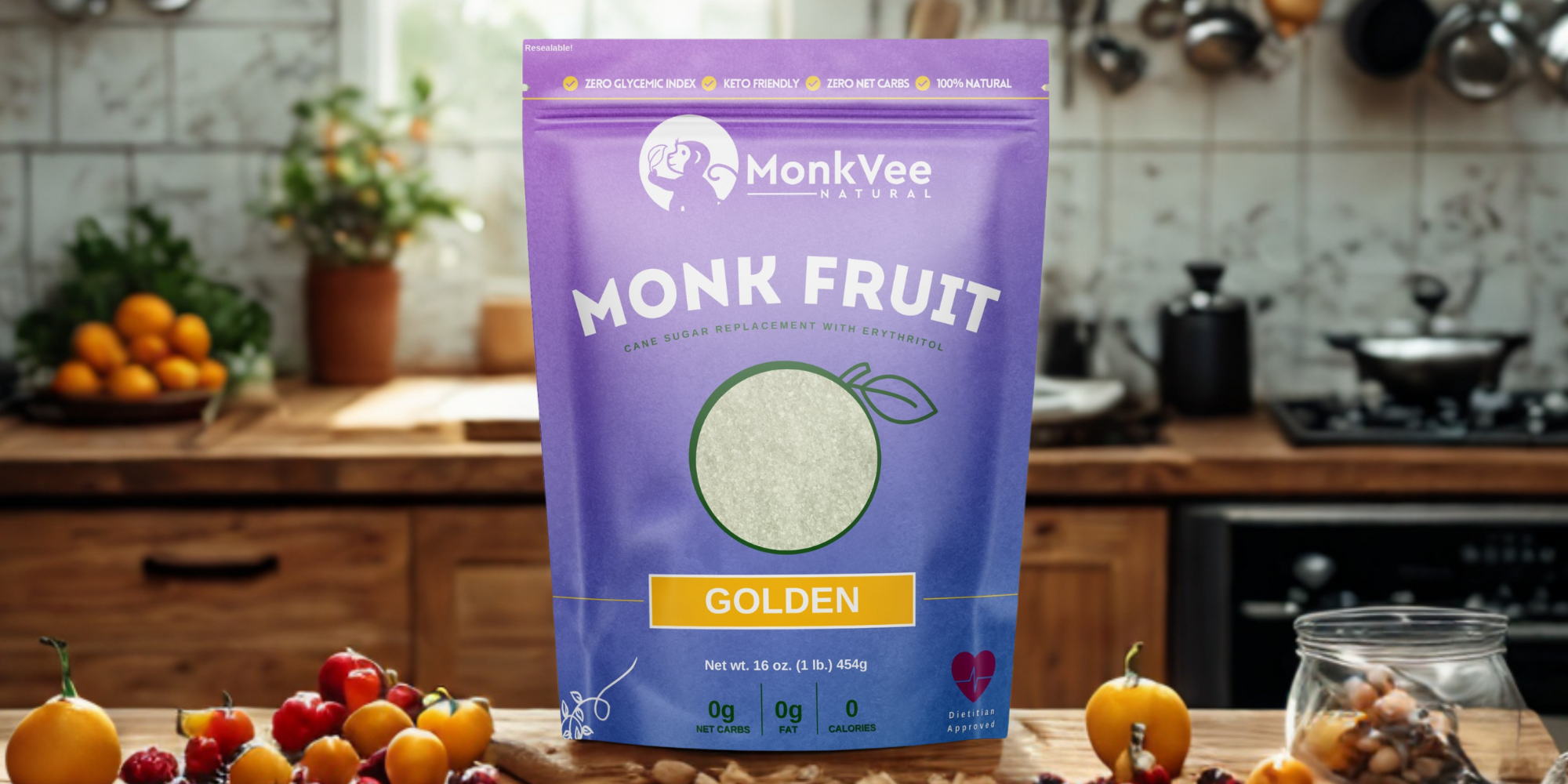
Welcome to the Sweet Life.
!